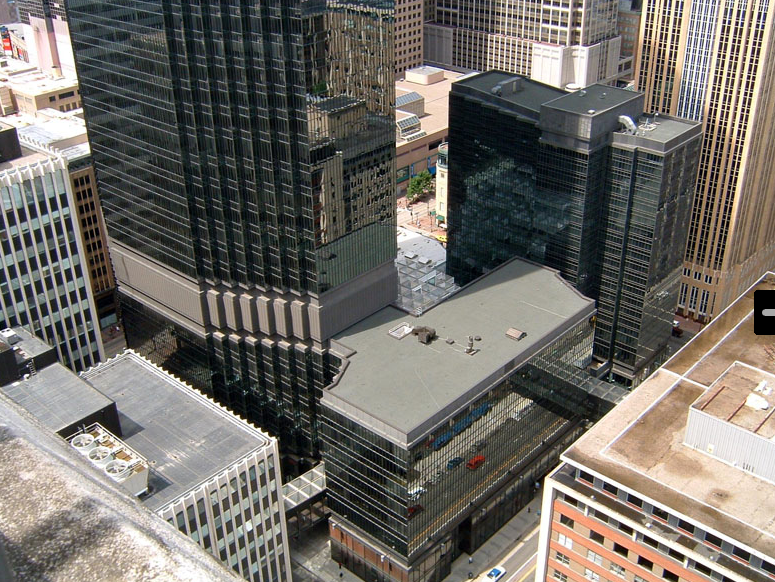How to Prepare for the Next Polar Vortex
The general manager of Minneapolis’ tallest building tells how her property got through the recent polar vortex safely—and shares tips for future events.
When Deb Kolar first learned that a polar vortex was on its way to the Midwest with her city, Minneapolis, primed to take the hardest hit, it was just business as usual for the real estate veteran.
Kolar is the general manager of operations at the IDS Center, the tallest building in Minneapolis. The mixed-use property in the heart of downtown houses more than 2 million square feet, including a 57-story office tower with an 8-story annex, a retail center and a four-star hotel. She has worked in management at the building, which is owned and operated by Accesso Partners, for the past 25 years, enduring many a brutal Minneapolis winter. But nothing compared to the Arctic blast of last week’s polar vortex.
“This was truly something we had not ever experienced before,” Kolar told Commercial Property Executive. Sub-zero temperatures are nothing out of the ordinary during a Minneapolis winter, but often when the mercury dips very low overnight, it comes back up during the day. That was not the case last week.
“This was long and dangerous,” she said of the frigid temps, which at one point hit a low of 50 degrees below zero with the wind chill factored in.
But Kolar and her team were prepared. Once she knew what was coming, she immediately reached out to the retail component of the property, as they oversee their own equipment and systems, to make sure they were prepared to withstand the cold.
She also made a big decision on heat at the IDS Center: they would run the building 24/7 during the polar vortex.
“It’s so hard to make up that temperature once the spaces get cold and it also eliminates the potential for freezing,” said Kolar, who knows from experience the kind of damage burst pipes and sprinkler systems can do to a building.
And the big heating bill they’d get hit with afterwards? Worth it.
“It’s so much cheaper than a sprinkler pipe freezing,” she said. Kolar and her team usually keep the IDS Center at around 72 degrees on a normal business day, but during an event like the polar vortex, they strive to keep the temperature from dropping too much below 67, not an easy task in a tower with a glass curtain wall.
PREPARATION IS THE BEST DEFENSE
Kolar’s biggest advice for building owners and managers bracing for severe winter weather?
Number one: make sure emergency procedures are in place. And if something does happen, like a burst pipe or an HVAC system issue, know the right people to call.
“The ability to have great vendor partners available, like an HVAC guy or clean response company on speed dial so you’re first in line—that’s key,” said Kolar.
That ties in to another crucial piece of advice—communication. In Minneapolis, the city has a radio link that connects city agencies to private sector companies in a seamless two-way radio conversation. That lifeline, plus staying in contact before, during and after an event with vendors, tenants and other operations staff, helps get out information fast.
Kolar recommends managers proactively check equipment throughout the year to make sure everything’s up and running and functioning properly. And with major snow and ice accumulation, have a plan and think ahead. For Kolar, that means making sure all the procedures are in place, especially at Crystal Court, the 8-story indoor park in the middle of the IDS Center.
“You have to be prepared, because it’s just plexiglass ceilings there,” she said. “So we have all the procedures in place to make it safe.”
A city that’s long learned to adapt to frigid weather, Minneapolis also has the benefit of enclosed skyways throughout downtown, allowing pedestrians to get around the city safely, without even having to step outside.
In New York City—where temperatures hit 5 degrees last week—the Department of Buildings (DOB) sends weather advisories for the real estate community whenever wind speeds are expected to exceed 35 miles per hour or higher, or weather events with potential to cause unsafe conditions arise, including icing and major snowfall.
Among the precautions the DOB urges building owners to take: always bring inside loose objects like garbage cans, lawn furniture and potted plants, anchor objects like gas grills or propane tanks, secure retractable awnings and remove aerial antennas and satellite TV dishes.
The DOB also advises property owners to properly “winterize” their buildings, by taking measures like having proper insulation around pipes and meters, carefully thawing pipes and meters when they freeze and not using a flame, avoiding fire hazards and making sure smoke alarms and carbon monoxide detectors are working.
For Kolar, it was smooth sailing for her building during the recent polar vortex. The heat stayed on and the pipes remained intact. But other buildings nearby weren’t so fortunate. One property not far from the IDS Center experienced significant water damage, one of several incidents that kept damage restoration companies “very busy” last week, according to Kolar.
“You see that and you just knock on wood and are thankful you didn’t experience it,” she said.
Images courtesy of Deb Kolar









You must be logged in to post a comment.